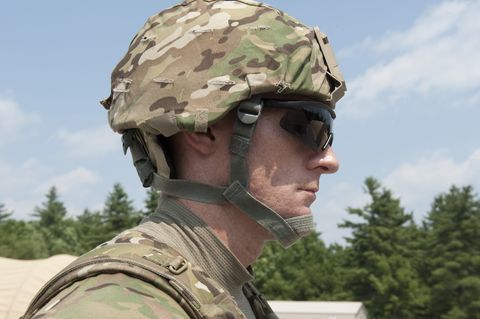Military helmet brands that have won the hearts of the customers all across the globe include ScorpionExo, Chinook, and Ironman. These are only three of the hundred and sixty types of military helmets available. There is a distinct difference between various military helmets. One of them is meant for battlefield use, while the other one serves as a regular fast helmet. Military helmets designed with DuPont Kevlar polyester fiber meet the most demanding demands of an aggressive task. They also help to provide adequate protection against all kinds of shrapnel, ranging from small arms fire to high-powered machine-gun rounds. You can also visit Safe Life Defense now.
Military helmet brands are primarily designed with one basic objective in mind – to provide the highest level of protection to the soldiers on the battlefield. The material they are made out of is specifically chosen based on the type of protective eyewear needed by the users. There are different types of eyewear used in different situations. Among the most popular ones are the ones that come in the form of hard lenses, soft lenses and even go over to the level of being digital.
All these helmet covers come with different features and color options. For example, there are those made out of high impact plastic that are capable of providing good protection even in unfavorable weather conditions. In terms of color options, there is a huge range to choose from. Besides the typical colors like green, yellow and orange, you can also get your hands on white and camouflage colors as well.
High-impact plastics are also highly preferred by many users. The material used for the construction of these military helmets is made from fiberglass. This makes it a completely bulletproof. The Kevlar helmet fibers are very popular these days.. Fiberglass is considered the best of its kind as it is the strongest and most durable of all the fiberglass materials available.
Although fiberglass is highly favored, another option available for these military helmets made of fiberglass is the Mylar. Mylar has some advantages over its competitor and the former is more preferable by the users. Mylar is capable of resisting impacts of up to 400 times its original strength. Unlike the fiberglass, a considerable amount of flexibility is provided by the material.
It is in this ability that Mylar has over its competitor. The material is also capable of providing superior protection and comfort. One of the most vital features of the Mylar helmet is that it comes with thermoplastic elastomeric fiberglass pads that increase the padding of the helmet. This pad system reduces the overall pressure that is exerted on the user’s head. This means that during the entire testing process, there is very little or no additional pressure on the head as compared to the other types of tactical helmets.
Since the entire concept of combat helmet testing is to check if the helmet can protect the user against projectiles that are of high impact force, the manufacturers of these tactical helmets have to go a step further to test the structural integrity of the helmets. To make things even more interesting, the testing is often done using dummy rounds so as to ensure that each round that passes through the helmet will impact with the same level of force as that of the real round. Another interesting feature that is provided during these helmet testing is the usage of impact sensors.
The purpose of using sensors is to prevent the users from being injured by shrapnel. In the case of the fiberglass, the shrapnel will be prevented from hitting the users. But in the case of military helmets made of fiberglass or any other material that is subjected to hard impacts, the chances of the user being hit by shrapnel are very high.












